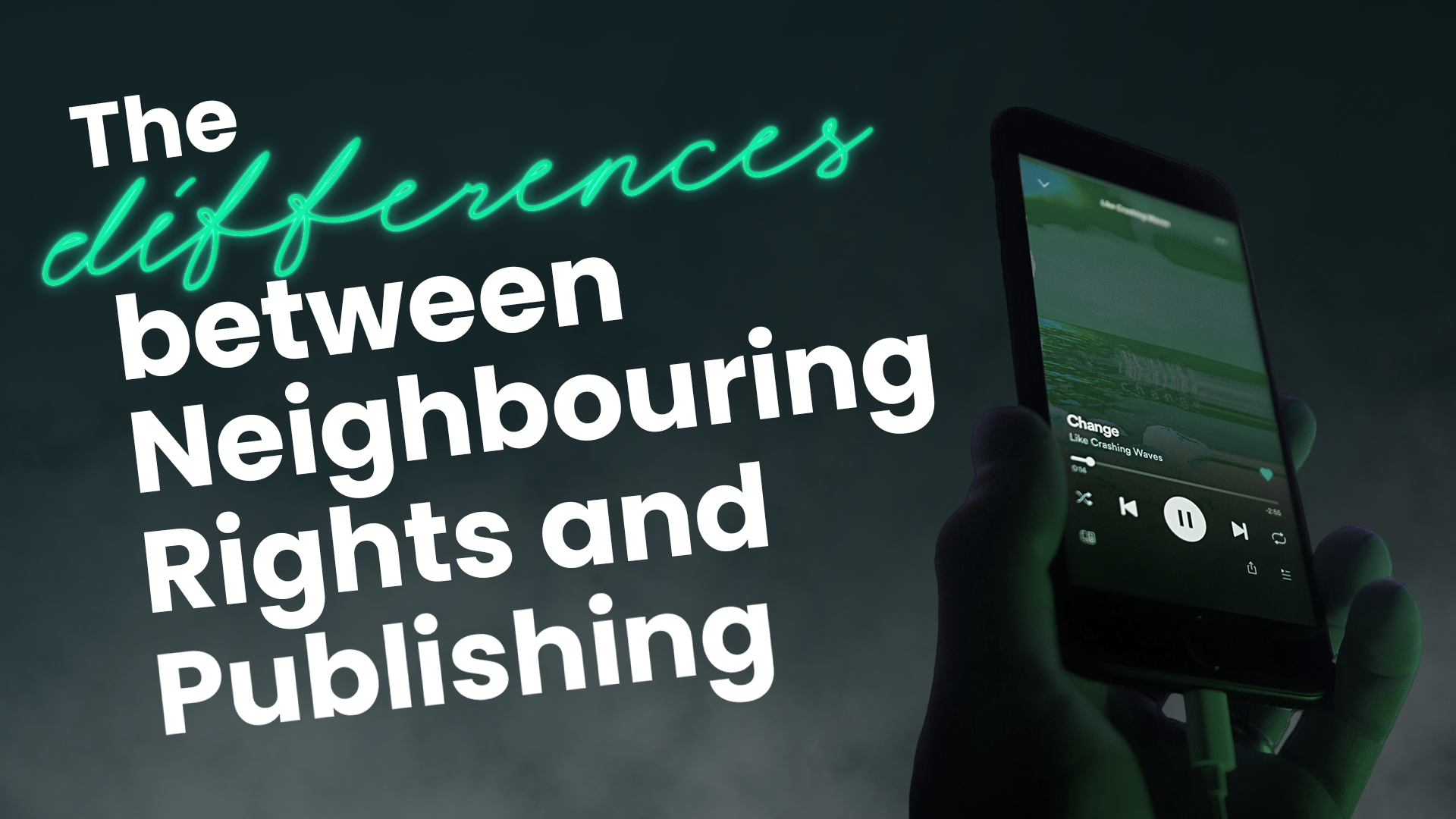The Difference Between Neighbouring Rights and Publishing
Got your wires crossed and unable to untangle the differences between royalty types? With Neighbouring Rights, one it usually seems to be mistaken for is publishing. To be fair, it’s not without reason, in fact, Neighbouring Rights are called as much because they ‘neighbour’ publishing royalties. Both are entirely separate income streams – meaning yes, you can claim more than you thought if you’d originally thought them the same!
Ultimately, they refer to two different things…
Neighbouring Rights apply to the sound recording whereas publishing applies to the composition.
Every commercially released song has these two basic types of copyrights attached to them, one for the composition and another for the recording of the song – but both pay differently. Neighbouring Rights (the recording) pays the artist(s) that recorded the track and the record label. Publishing (the composition) however, pays the songwriter(s) and publisher for track plays.
So, how are they collected?
Neighbouring Rights are collected by region specific societies called Collection Management Organisations, or CMOs for short. Here in the U.K our CMO is PPL (UK) and through their international network, they will collect payments for your track plays – even if they’re played in other countries (providing they pay Neighbouring Rights).
Publishing, on the other hand, is collected by publishing companies working on behalf of songwriters and collect three types of ‘sub’ royalties from sources across the world.
Performing Royalties:
Produced from live performances of a track. Think headline concerts, festival appearances or even stripped back acoustic sets on the radio.
Mechanical Royalties:
Generated for reproductions of the track including physical copies of your track such as CD’s or vinyl. They also include digital streams and downloads which are now the primary source of income for this royalty type.
Sync Licensing Royalties:
Sync royalties come from AV (audio visual) placements such as TV, films, advertising and video games. Sync is defined as the synchorinisation of music and pictures. They pay varying amounts based on three factors; scope of use, term and territory.
For Neighbouring Rights, if you are the master owner of your recording, you can expect to see the royalty paid on (depending on the country of performance):
• Terrestrial Radio Plays
• Web Radio Services
• Being Played on TV
• Public Performance (Public Places & Businesses)
• New Online Media such as Webcasts and Simulcasting
How do I get what I’m owed?
Neighbouring Rights:
Signed artists –
The label has to register the recordings as the rightsholder before you can claim and collect as the performer. Once they do, you log in to your CMO and CLAIM the recordings by entering the role you played either as a contracted featured artist or a non-featured artist (except in the US, you can register the recordings and your performance with SoundExchange at any time).
Unsigned artists –
You have to register the recordings with your CMO as the rightsholder and then claim them as the performer, as above.
Publishing:
Signed writers –
Your publisher will register your compositions with your country’s PRO (Performing Rights Organisation – PRS and MCPS in the UK) and the publisher will collect, manage and track those performance and mechanical royalties respectively.
Unsigned writers –
You will have to register your compositions with your PRO. If you have your own publishing entity, you can join the PRO as a publisher as well as a writer.
So, there you have the key differences between Neighbouring Rights and Publishing, but don’t worry if you’re still wandering in the dark. Royalties are a complex landscape of legal and industry jargon that takes time to break through. That’s why we’re here to help you clear that confusion. Get in touch if you’re still struggling to make sense of it all, or sign up to IAFAR and become a member for access to our brilliant learning resources.




